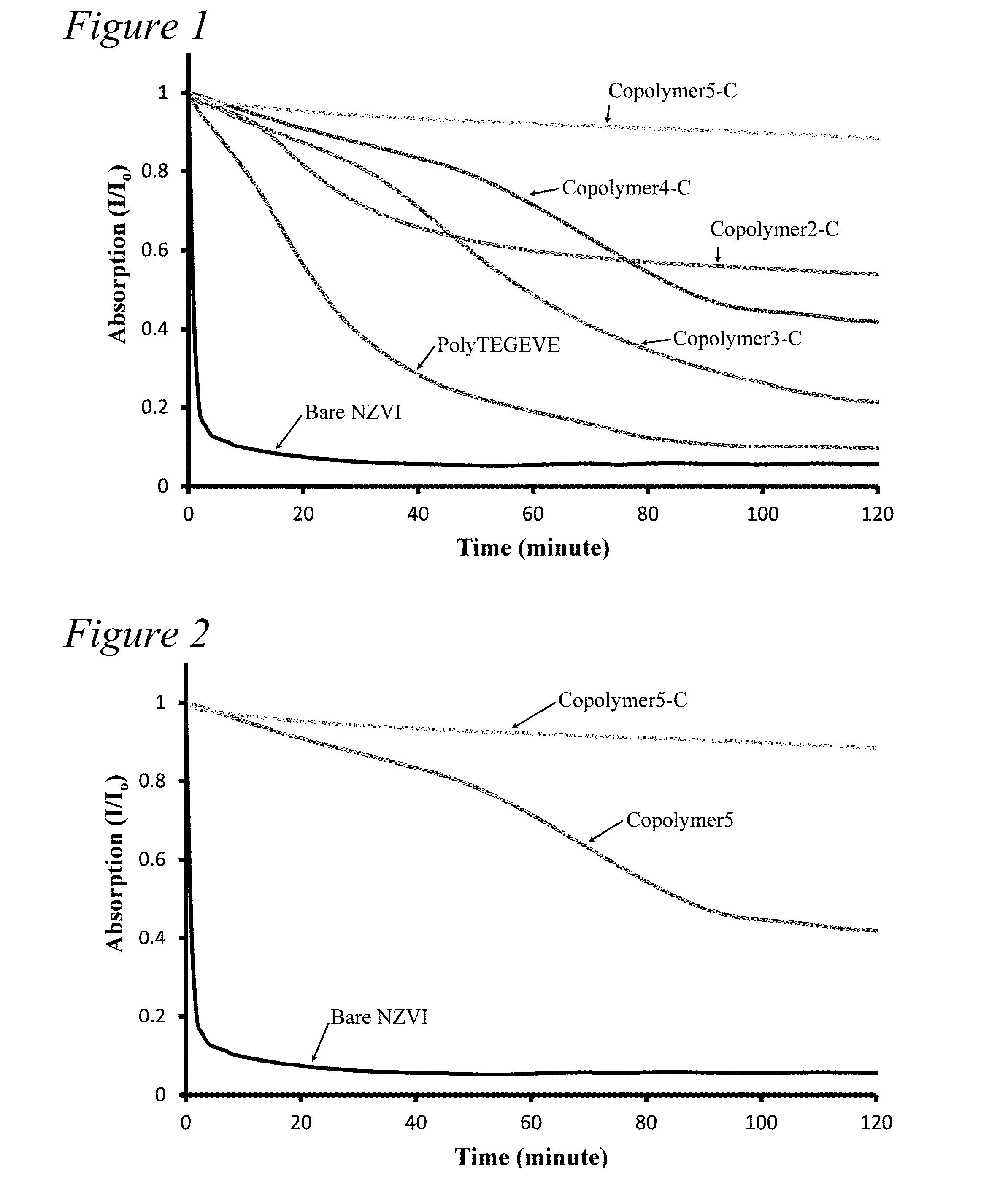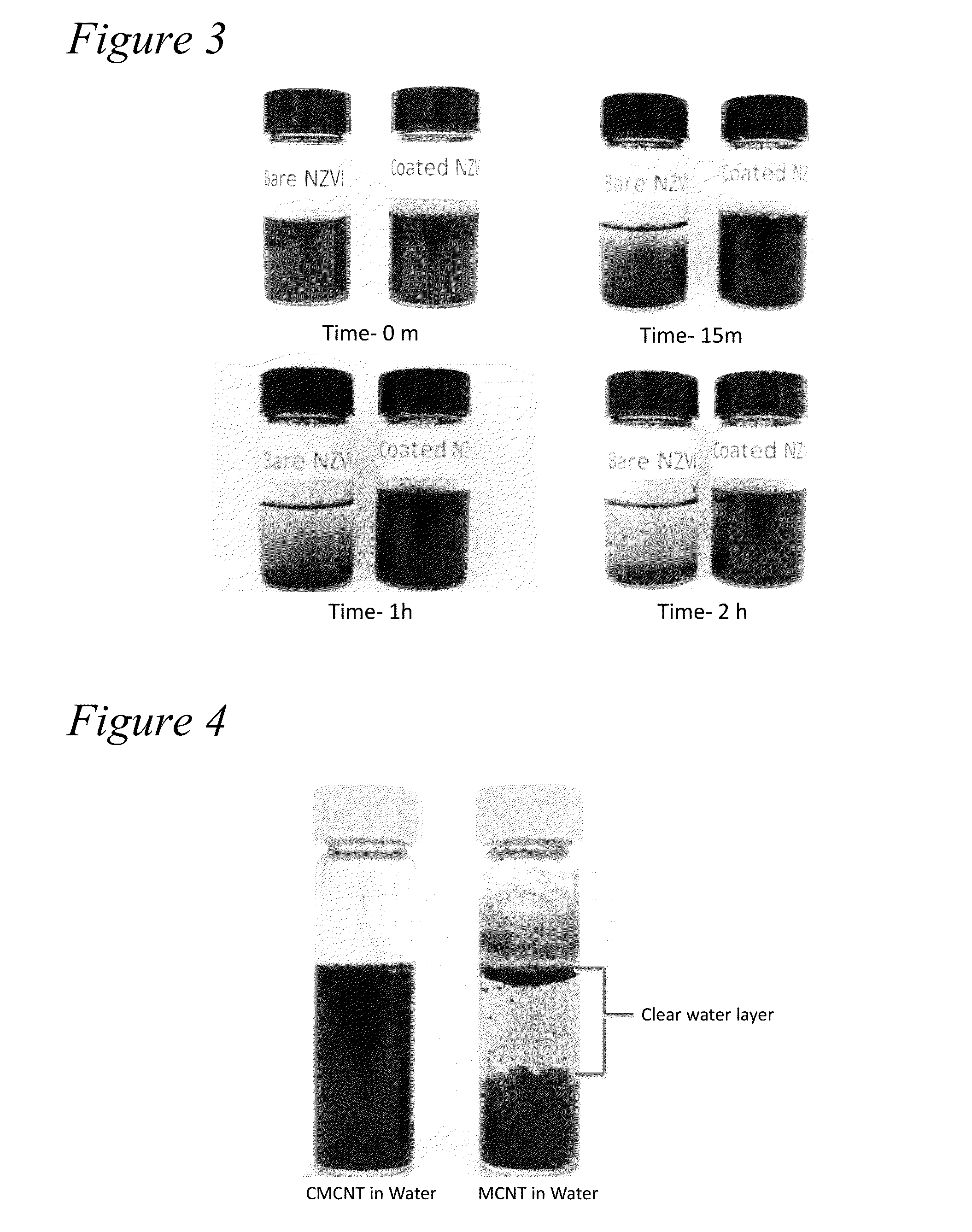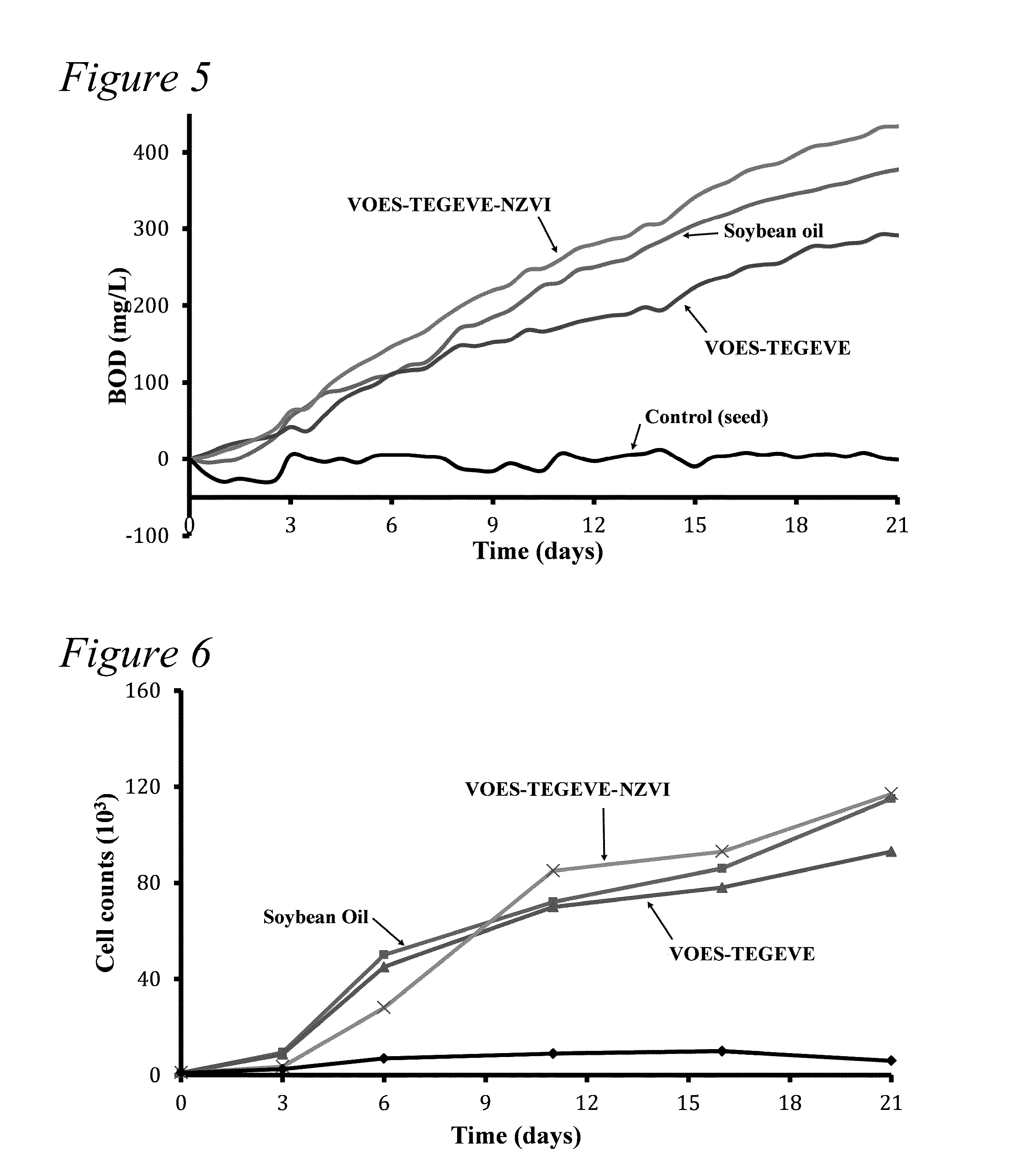Functionalized Amphiphilic Plant-Based Polymers
- Summary
- Abstract
- Description
- Claims
- Application Information
AI Technical Summary
Benefits of technology
Problems solved by technology
Method used
Image
Examples
example 1
Sedimentation Study
Synthesis of 2-(Vinyloxy)ethyl Soyate (VOES) Monomer
[0117]VOES was synthesized as follows: First, 0.42 g of KOH was dried an oven at 140° C. for 30 minutes to remove moisture. Then, 15 g of soybean oil, 15 g of ethylene glycol monovinyl ether, and the dried KOH were mixed together in a two-neck round bottom flask and stirred for 3 hr at 70° C. The reaction mixture was then cooled to room temperature and transferred to a 250 ml separatory funnel. 100 ml of n-hexane was added to the separatory funnel and the solution washed with acidic, deionized (DI) water (pH 3-3.5) twice and then washed multiple time with DI water and finally with brine solution. The organic layer was dried over MgSO4 and the product isolated by vacuum stripping volatiles. Yield: 13 g (84%). 1H NMR (400 MHz, CDCl3, TMS): δ (ppm) 6.45 (m, 1H), 5.34 (m, 1.5H), 4.28 (t, 2H), 4.16(dd, 1H), 4.01(dd, 1H), 3.85 (t, 2H, ═CH—O—CH2—CH2—), 2.76 (m, 1.5H), 2.30 (t, 2H,), 2.03 (m, 4H), 1.57 (m, 2H), 1.29 (m, ...
example 2
Anhydride-Functional Terpolymer
Synthesis of the Tosylate of Triethylene Glycol Methyl Ether (Ts-TEGME)
[0131]In a 200 mL beaker, 8 g of NaOH was dissolved in a mixture of 40 mL water and 30 mL THF. In a 500 ml round-bottom flask, 16.5 g of triethylene glycol methyl ether (TEGME) was a dissolved in 30 mL of THF. The flask containing the mixture was placed into an ice bath and, once the temperature had reached 0° C., the NaOH solution was added to the flask. After 30 minutes, a solution of 25.7 g of p-toluenesulfonyl chloride dissolved in 70 mL of THF was added dropwise using an addition funnel. Once the addition was finished, the reaction mixture was stirred for 2 hr at 0° C. The reaction mixture was then transferred to a reparatory funnel and 100 ml of ice water added. The product was extracted using 100 mL of CH2Cl2 twice. The organic layers were combined and then washed twice with 150 mL of DI water and then with 150 mL of brine solution. The reaction mixture was dried with MgSO4 a...
PUM
| Property | Measurement | Unit |
|---|---|---|
| Time | aaaaa | aaaaa |
| Composition | aaaaa | aaaaa |
Abstract
Description
Claims
Application Information
 Login to View More
Login to View More - R&D
- Intellectual Property
- Life Sciences
- Materials
- Tech Scout
- Unparalleled Data Quality
- Higher Quality Content
- 60% Fewer Hallucinations
Browse by: Latest US Patents, China's latest patents, Technical Efficacy Thesaurus, Application Domain, Technology Topic, Popular Technical Reports.
© 2025 PatSnap. All rights reserved.Legal|Privacy policy|Modern Slavery Act Transparency Statement|Sitemap|About US| Contact US: help@patsnap.com



